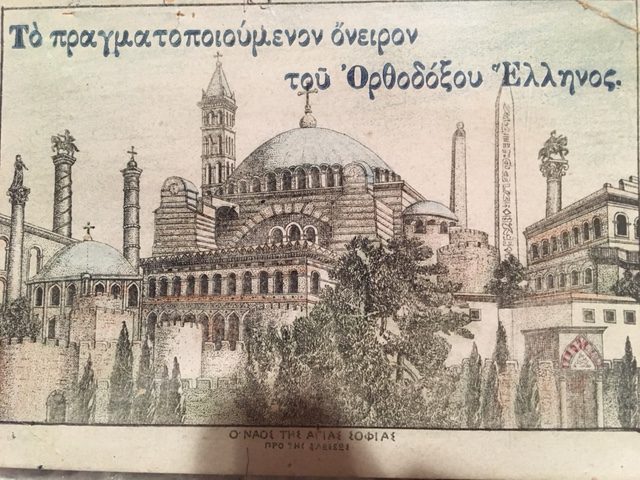
On 29 May 2020, the anniversary of the Fall of Constantinople and the heroic martyrdom of Emperor Constantinos Paleologos the Great Church of Aghia Sophia was used for Islamic prayers. Four years ago, there were Koranic readings in the Great Church during the Muslim holy days of Ramadan. Aghia Sophia has since 1985 been on the list of world heritage sites of UNESCO (United nations educational scientific cultural organization). UNESCO has failed to make any public statement opposing Turkish plans.
I have repeatedly contacted UNESCO about this matter. As far back as the fall of 2013, I began writing to UNESCO’s New York office. I also began calling them on the phone and spoke with some of their representatives. I was told directly that a country can do whatever they want with a particular site that is on their territory and UNESCO must respect that decision. I did not believe that to be true then, and I do not believe that to be true now. UNESCO has publicly (and rightfully) condemned the Islamic state for destroying the cultural artifacts of Iraq. They remain ethically obligated to speak up in defense of Aghia Sophia.
In the summer of 2014 I visited a UNESCO office in Athens. I spoke with a gentleman to inform him that Turkish politicians were openly calling for the conversion of Hagia Sophia into a Mosque. In addition to that, I informed him that at the time two other Church-Museums named Aghia Sophia in Trebizond and Iznik (the former town of Nicea where the first and seventh ecumenical councils of the Church took place to condemn the arian and iconoclastic heresies) had already been converted into Mosques. Since then, another Aghia Sophia in Edirne (the former Adrianople) has been converted into a Mosque.
In March 2015, while on a visit to Paris I visited the headquarters of UNESCO and met with the organizations “chief of Europe and North America” to protest Turkish plans to make Aghia Sophia a Mosque. The woman informed me that UNESCO had spoken with the Turkish authorities and had been given assurances that the Great Church would not become a Mosque. I have never believed this. Before my Paris visit, large crowds of Turks had gathered outside Aghia Sophia to pray which I perceived as a direct claim to making Aghia Sophia a Mosque.
In our conversation, I pointed out to her Aghia Sophia was a product of the Gospel and Orthodox theology. Saint Justinian who presided over the building of the Church is a Greek Orthodox Saint. I reminded her that there were three parties interested in Aghia Sophia. The Turks, the academic community and UNESCO, and Greek Orthodox Christians. I told her outright only the Greeks who have been deprived of Aghia Sophia are challenging the Turks in order to save the Church. Her responses were vague and not entirely true. Know ing Turkey’s aggressive pressure campaigns on various governments, universities, and other institutions, I asked her if UNESCO had been subjected to Turkish pressure. She refused to answer the question saying she does not answer “political questions”.
The situation is what it is. Aghia Sophia is now being used as a Mosque. This is not an unexpected development. Knowing the nature of Turkish regimes in general, and the fanaticism of the present government this was inevitable. What is particularly despicable is the silence not only of UNESCO but that of the academic community worldwide. The field of Byzantine studies is a glorious one and there are excellent historians and academics who specialize in this field.
To my knowledge, there has no protest on the part of the academic community to protest Turkish plans for Aghia Sophia. UNESCO in particular had a moral responsibility considering that the Church is on its list of world heritage sites. Through their silence, both UNESCO and the academic community have become complicit in this Turkish crime against Greek Orthodoxy. The silence and hypocrisy of the civilized world is what has fed Turkey’s crimes against humanity in the past and continues to feed it in the future.
